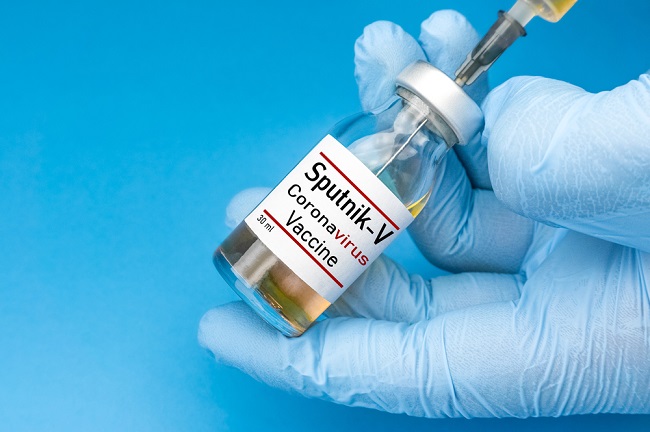Bronchopneumonia in children often causes concern for parents. This respiratory infection generally occurs in children aged 2 years and under. Bronchopneumonia is often the leading cause of death from infection in children under 5 years of age.
Based on a 2015 report by UNICEF and the Indonesian Pediatrician Association (IDAI), there were around 20,000 children under five in Indonesia died of pneumonia. One type of pneumonia that is often experienced by children is bronchopneumonia, which is inflammation of the main airways (bronchi) and lungs due to bacterial, viral, or fungal infections.

The risk of bronchopneumonia increases if the child lives in a dirty environment, is often exposed to cigarette smoke, has had direct contact with people with pneumonia, or has certain health conditions, such as malnutrition.
Symptoms of Bronchopneumonia in Children
Symptoms of bronchopneumonia in children can vary, ranging from mild to severe. Symptoms of this disease can be similar to the symptoms of other lung diseases, namely bronchitis or bronchiolitis. The following are some common symptoms of bronchopneumonia in children:
- Cough with phlegm
- Fever
- Shortness of breath or rapid breathing
- Shivering
- Chest pain
- Fussy or trouble sleeping
- Loss of appetite
- Nervous
- Throw up
- Face looks pale
- Lips and nails turn bluish
- Breath sounds
If the symptoms of bronchopneumonia in children are not treated immediately, it is possible that other, more dangerous complications will arise. Therefore, action steps need to be taken immediately.
Handling of Bronchopneumonia in Children
To diagnose bronchopneumonia in children, physical and supporting examinations are needed in the form of blood tests, X-rays, CT scans, sputum tests, sputum cultures, pulse oximetry, and bronchoscopy.
After the diagnosis of bronchopneumonia has been confirmed, the doctor will provide treatment in the form of:
Administration of drugs
Mild bronchopneumonia caused by a virus usually clears up in a few days or weeks. If bronchopneumonia is caused by a bacterial infection, your doctor may prescribe antibiotics. Meanwhile, bronchopneumonia due to fungal infection can be treated by giving antifungal drugs according to a doctor's prescription.
In addition, doctors can also prescribe fever-reducing drugs, pain relievers, and cough medicines to relieve pneumonia symptoms in children and speed up the recovery process.
Fluid therapy (infusion)
Children with bronchopneumonia often have decreased appetite. Therefore, the doctor will also provide fluid therapy through an IV to prevent the child from becoming dehydrated.
In addition to giving fluids through an IV, children are also advised to maintain their fluid intake by drinking lots of water and eating regularly.
Oxygen therapy
If the child is difficult to breathe or the oxygen level in the blood is low, the doctor will give oxygen therapy. Thus, the child can breathe easily again.
In addition to giving medication and therapy, the doctor will also advise parents to ensure that the child is completely rested, stay away from exposure to cigarette smoke, and provide the child with regular food intake so that their energy and nutritional needs are still met.
Children who have mild bronchopneumonia can be treated at home with medication from a doctor. However, if the bronchopneumonia experienced by the child is severe enough or he has comorbidities, the child needs to be treated in a hospital.
In addition, children also need to get medical attention immediately if they experience shortness of breath, blue lips and skin (cyanosis), dehydration, look lethargic, or begin to lose consciousness. This can be a sign of a child experiencing complications due to bronchopneumonia.
Complications of Bronchopneumonia in Children
Complications of bronchopneumonia are generally more common in children who are delayed in getting treatment or children who have comorbidities, such as diabetes and malnutrition.
There are several complications of bronchopneumonia in children that may occur, including:
1. Blood infection
This condition occurs due to bacteria that enter the bloodstream and cause infection to other organs. Blood infection or sepsis has the potential to trigger organ failure.
2. Lung abscess
A lung abscess can occur when pus builds up in the lung cavity. This condition can usually be treated with antibiotics. However, surgical procedures are sometimes also performed to remove them.
3. Pleural effusion
Pleural effusion is a condition when fluid fills the space around the lungs and chest cavity. The fluid can be removed using a needle (thoracentesis) or catheter (chest tube).
In some cases, a serious pleural effusion requires a surgical procedure to remove the fluid.
4. Breathing failure
Severe bronchopneumonia can make it hard for your child to breathe. This can then result in the child's oxygen needs being insufficient and triggering the child to experience respiratory failure.
If not treated immediately, respiratory failure can make the child's organs unable to function and breathing stops altogether. If this happens, the child who has respiratory failure will need to get rescue breaths through a ventilator machine.
How to Prevent Bronchopneumonia in Children?
Bronchopneumonia in children does look scary, but this disease can be prevented. The following are some simple steps to prevent your child from brocopneumonia:
- Teach children to always wash their hands at all times, especially before eating and after urinating or defecating.
- Avoid children from exposure to pollution, such as dust and cigarette smoke.
- Keep your baby or child away from people with bronchopneumonia.
- Complete immunization of children to be protected from bacteria and viruses that cause bronchopneumonia infection.
Children, especially those under the age of 2 years, are more susceptible to bronchopneumonia because their immune systems are still weak.
If the child has symptoms of bronchopneumonia, immediately take the child to the doctor for proper examination and treatment. The sooner treated, the risk of complications due to bronchopneumonia in children will be smaller.









